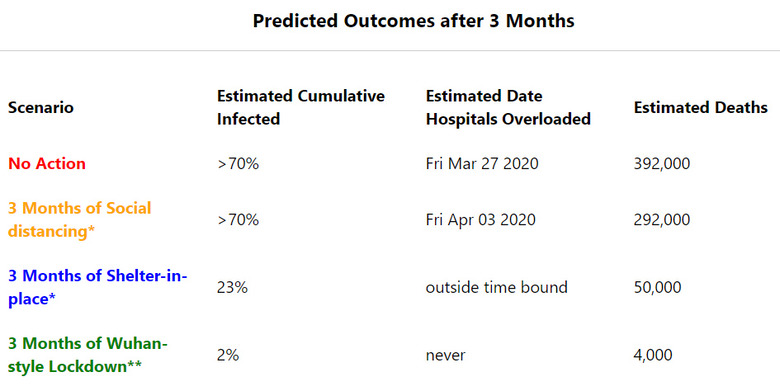Mapping Project Models When Coronavirus May Overload US Hospitals
A new website called 'COVID Act Now' uses mathematical models to estimate how quickly cases of the novel coronavirus may develop based on the actions taken by each individual state in the US. The model doesn't predict the future, but rather offers estimates of how the pandemic may play out across the US based on the steps each state takes to mitigate the spread of the virus.
Various countries have reacted to the ongoing pandemic in different ways, but social distancing efforts — including complete lockdowns on all non-essential activity — have been a common denominator across them. These measures have been taken in an effort to 'flatten the curve,' which means spreading out and reducing the number of COVID-19 cases to avoid a sudden, dramatic peak that would severely impact hospitals and strain medical supply chains.

The new 'COVID Act Now' website models the effects of various social distancing efforts in each US state to shed light on how many deaths these actions may prevent. Of particular note, the website offers a date range estimate for the 'point of no return,' which are the dates when the state's hospitals may be overloaded if prevention doesn't take place.
In New York, for example, it is estimated that the 'point of no return' was at some point between March 13 and March 18. If no action were taken, the model anticipates that 392,000 people in the state could die and that the hospitals may be overloaded by around March 27. The numbers drop rapidly with more severe preventative actions, however.
A shelter-in-place order that lasts three months, for example, would drop the estimated death count down to 50,000, whereas a 'Wuhan-style' lockdown would bring the number down to 4,000 — based on the model, at least. Health officials have warned that after social distancing efforts stop, however, hospitals may see a resurgence of the virus, particularly if people aren't careful about washing their hands and covering their mouths.
This issue is expected to persist for months until an effective vaccine can be developed, manufactured, and deployed to the public. In the meantime, health experts are developing treatment options that may reduce the severity of COVID-19 in people who contract it, highlighting the importance of delaying the spread of the disease for as long as possible.
